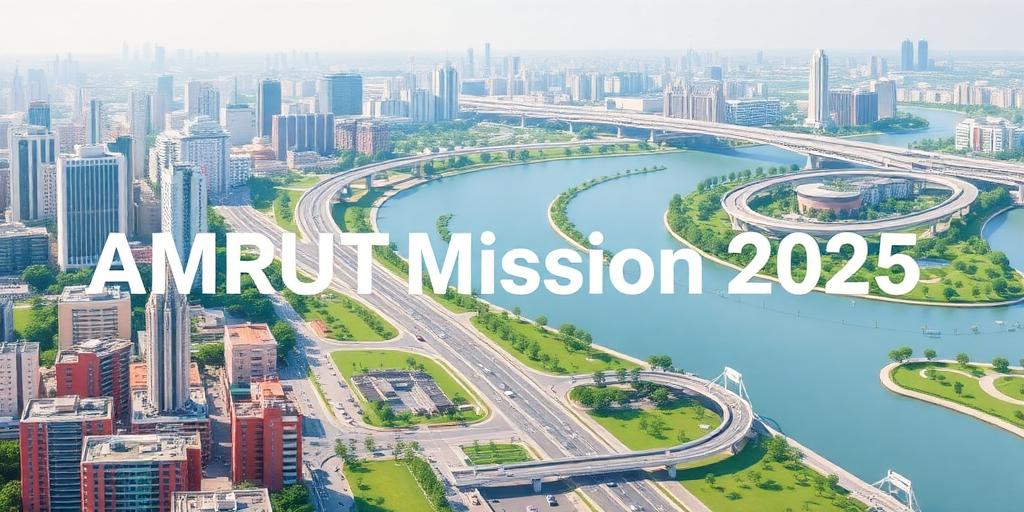The AMRUT (Atal Mission for Rejuvenation and Urban Transformation) Mission 2.0, launched in 2021, represents a significant step forward in India's urban development strategy. Building upon the foundation laid by the first phase of AMRUT, this iteration sets ambitious goals for 2025, focusing on water security, improved sewerage and septage management, stormwater management, and promoting green spaces and non-motorized urban transport. The mission reflects the Indian government's commitment to sustainable and inclusive urban growth.
Key Objectives and Components
AMRUT Mission 2.0 aims to make cities 'water secure' and 'self-sustainable' through a circular economy approach. This involves:
- Water Security: Ensuring access to clean and affordable water for all urban households. This includes projects for water source rejuvenation, water treatment plants, and efficient distribution networks.
- Sewerage and Septage Management: Improving sanitation infrastructure to ensure proper treatment and disposal of wastewater, thereby reducing water pollution and improving public health.
- Stormwater Management: Developing infrastructure to mitigate urban flooding and improve the city's resilience to climate change.
- Green Spaces and Urban Mobility: Creating and rejuvenating green spaces like parks and gardens to improve the quality of life. Promoting non-motorized transport through cycling tracks and pedestrian-friendly infrastructure.
Implementation Strategy
The mission adopts a project-based approach, with states and urban local bodies (ULBs) responsible for planning, implementation, and monitoring. The central government provides financial assistance and technical support. Key strategies include:
- Convergence: Integrating AMRUT Mission 2.0 with other urban development programs like the Swachh Bharat Mission and Smart Cities Mission to maximize impact and avoid duplication.
- Public-Private Partnerships (PPPs): Encouraging private sector participation in project development and financing to leverage expertise and resources.
- Technology Adoption: Promoting the use of innovative technologies for water management, waste treatment, and urban planning.
- Capacity Building: Providing training and skill development programs for ULB staff and other stakeholders to enhance their capacity to implement and manage urban infrastructure projects.
Expected Outcomes
By 2025, AMRUT Mission 2.0 envisions:
- Universal coverage of water supply and sewerage services in all AMRUT cities.
- Improved water quality and reduced waterborne diseases.
- Enhanced urban resilience to climate change and natural disasters.
- Increased green cover and improved air quality in cities.
- Sustainable urban mobility and reduced traffic congestion.
Challenges and the Way Forward
While AMRUT Mission 2.0 has the potential to transform urban India, several challenges need to be addressed:
- Financial Sustainability: Ensuring adequate funding and revenue generation for ULBs to maintain and operate the created infrastructure.
- Land Acquisition: Overcoming delays in land acquisition for project implementation.
- Community Participation: Engaging citizens in project planning and monitoring to ensure ownership and sustainability.
- Effective Monitoring: Strengthening monitoring mechanisms to track progress and ensure accountability.
To realize the vision of AMRUT Mission 2.0, a concerted effort from all stakeholders is required. This includes strong political will, efficient project management, community participation, and a focus on sustainability. By addressing these challenges, India can pave the way for inclusive, resilient, and livable cities, contributing to the nation's overall development goals.









